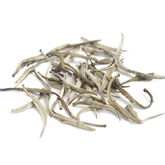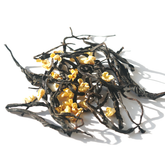Does Tea Expire? How to Properly Store Your Tea
While most foods spoil after their expiration date and become unfit for consumption, tea's expiration date is more akin to a "best before" date. Tea doesn’t necessarily go bad after this time; however, its color, aroma, and taste might begin to change, making it less enjoyable. In fact, some types of tea improve over time, becoming richer in flavor as they age(such as puerh tea). Whether tea is still drinkable after its expiration date depends largely on how it has been stored.
If loose leaf tea hasn’t been exposed to moisture, mold, or contaminants, it’s generally safe to consume, although it may lack the original aroma and flavor.
To enjoy tea at its best, different types of tea have their own optimal consumption times. Some teas are best consumed fresh, while others, like aged teas, can become more flavorful with time. In this guide, we’ll cover the typical shelf life of various types of tea and how to properly store them.
Recommended purchase:
Green Tea
Shelf life: 12 months, best stored in a sealed container in the refrigerator.
Green tea (like Longjing, Biluochun, and Huangshan Maofeng) is a non-fermented tea, known for its fresh, aromatic flavor when new. If the tea becomes soft, sour, or moldy, or the brew turns dark or brown, it indicates the tea has gone bad.

Properly sealed and stored in a cold environment, green tea can last for 12-24 months. However, premium varieties such as Longjing and Biluochun have shorter shelf lives of around 6-12 months. For the best flavor, green tea should be consumed when it is freshest, especially the first batch made in spring.
White tea
Shelf life: Improves with age when stored in a dry, dark, sealed environment.
White tea (like White Peony and Silver Needle) is a lightly fermented tea whose flavor evolves over time. Fresh white tea has a taste similar to green tea, being light and refreshing. After two to three years, white tea’s aroma becomes mellower, and its tea properties gradually warm. With five to six years of aging, the tea develops a sweet, rich flavor.

High-quality white tea can be stored for more than ten years under the right conditions. However, if it develops a sour or moldy smell, it is no longer suitable for drinking.
Black Tea
Shelf life: 12-24 months, best stored in a sealed, dry, and dark environment.
Black tea (such as Lapsang Souchong and Keemun) is a fully fermented tea. The fermentation process causes chemical reactions in the tea’s polyphenols, giving black tea its characteristic color, aroma, and flavor.

Loose leaf black tea typically has a shelf life of 18 months, while tea bags can last up to 24 months. Canned or foil-wrapped black tea can last around three years, while paper-packaged black tea has a shelf life of two years. However, certain black teas, like Yunnan "Shai Hong," improve with time, becoming more fragrant and flavorful.
Oolong Tea
Shelf life: 12-24 months, stored sealed, dry, and away from light.
Oolong tea (such as Da Hong Pao and Dan Cong) is a semi-fermented tea prized for its fragrance. Fresh Oolong is more aromatic and flavorful, and because the tea is roasted during processing, it’s recommended to let it rest for at least two months before consumption for a smoother taste.
Some varieties, like lightly roasted Tie Guan Yin and Taiwan’s high mountain Oolong, have a shorter shelf life of around 18 months if refrigerated.

Dark Tea
Shelf life: Can be stored for a long time in a sealed, dry, and light-free environment.
Dark tea, such as Liu Bao tea and ripe Pu-erh, is post-fermented, meaning it improves with age. The microbial oxidation process during fermentation enhances its flavor and color. As the tea continues to oxidize slowly over time, its properties become mellower and more refined.
Aged dark teas like Pu-erh, Tibetan tea, and other varieties can be stored for many years, gaining value as they age.

Pu-erh Tea
Shelf life: Can be stored for a long time in a sealed, dry, and light-free environment.
Both raw and ripe Pu-erh tea can be stored for long periods under appropriate conditions, and their quality often improves over time.
The taste of Pu-erh tea changes with age: raw Pu-erh is fresh and full-bodied within the first five years, while ripe Pu-erh becomes richer and more flavorful after five years.

Jasmine Tea
Shelf life:12 months, best stored in a sealed container in the refrigerator.
Jasmine flower tea typically belongs to the green tea category, so its shelf life is relatively short, usually around 12 months. It should be stored in a sealed, dry, and dark place, and it's best to keep it refrigerated.

If the aroma fades, the color darkens, or the taste deteriorates, it indicates that the jasmine tea has passed its peak flavor period and should be consumed soon. Pay special attention to preventing the tea from losing its fragrance, as jasmine tea's aroma can easily dissipate.
Summary Of Tea Expiration
Of the six major types of tea, white tea, Pu-erh tea, and dark tea can be stored long-term, with their flavors becoming more intense over time. White tea and Pu'er tea increase in value the longer they are stored, and they are considered collectible in China.
Green tea, on the other hand, has the shortest shelf life and should ideally be consumed fresh for the best taste. It’s recommended to store green tea in the refrigerator. Black tea and Oolong tea typically have a shelf life of 12-24 months, and if stored properly—sealed, away from moisture, and out of sunlight—they won’t spoil, though they may lose some of their fragrance.
FQA About Tea Expiration
Q1.Does tea expire?—Yes, teas like green tea, black tea, and Oolong tea do have expiration dates, but dark teas like Pu-erh, white tea, and other aged teas can be consumed even after many years.
Q2.Does green tea expire?—Green tea has the shortest shelf life among the six major types of tea, and it’s best consumed within one year for optimal flavor.
Q3.Do tea bags expire?—Tea bags are made with standard tea leaves, and their expiration depends on the type of tea inside. Black tea, green tea, and Oolong tea in tea bags all have expiration dates.
Q4.Does matcha expire?—Since matcha is made from green tea, it has a shorter shelf life, and it’s best to consume it within one year to enjoy its best flavor.
Q5.Does black tea expire?—Black tea has a typical shelf life of 12-24 months.
Q6.How to Store Tea?—Regardless of the type, tea should always be stored in a sealed, cool, dry, and dark environment. Green tea and lightly fermented Oolong teas (such as Tie Guan Yin or high mountain Oolong) should be kept in the refrigerator to maintain their freshness.
Q7.Can tea bags expire?—Yes, tea bags can expire, depending on the tea inside them. Black tea, green tea, and Oolong tea in tea bags do have expiration dates.
Q8.How to preserve tea shelf life?—No matter the type of tea, it’s essential to store it in a sealed, dry, and dark; environment. After taking out some tea, avoid leaving it exposed to air for long periods to prevent oxidation. This will help extend the tea’s shelf life as much as possible.
SEE MORE ABOUT TEA
If you are a beginner about Chinese tea:
Basic-Guide-to-Chinese-Tea
If you have questions about selecting tea:
Learn-more-about-chinese-tea
If you have questions about the benefits of tea:
Health-benefits-of-chinese-tea
If you have questions about brewing tea:
How-to-brew-loose-leaf-tea









